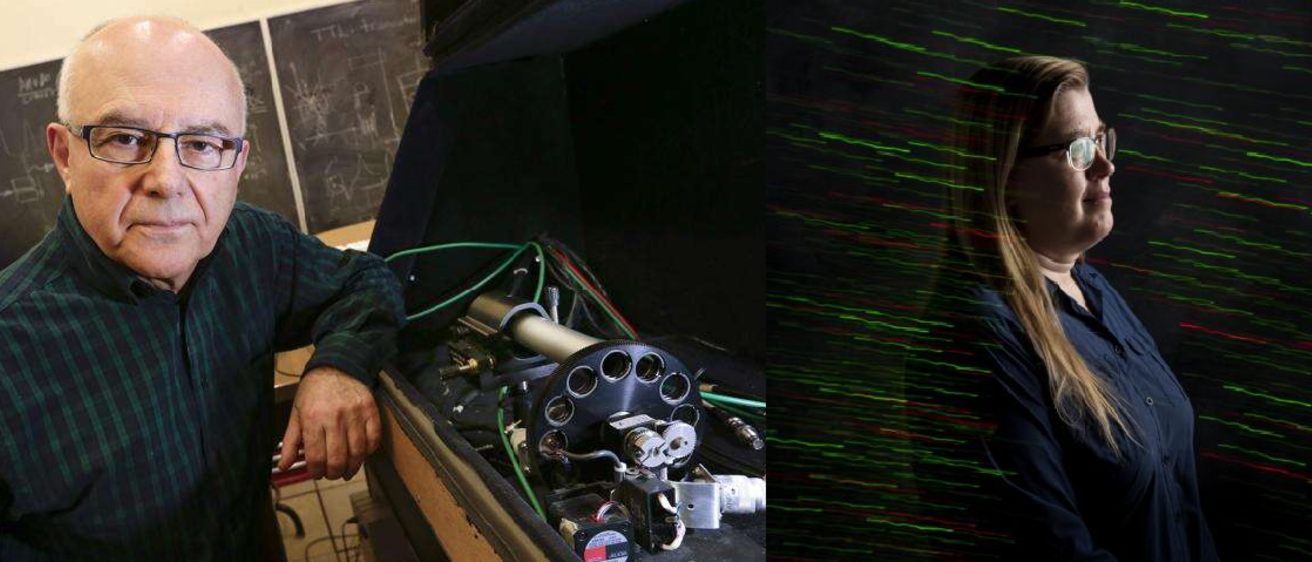Nearly four decades after famed astrophysicist James Van Allen in 1951 took charge of the University of Iowa physics department — and 30 years after discovering what became known as the Van Allen radiation belt — he made a phone call that would affect generations of scientists.
“James Van Allen was just leaving his post as a department chair, and Dwight Nicholson was taking over, and both of them called me because I couldn't decide whether I should come to Iowa or not,” physics and astronomy professor Yasar Onel said about a job offer UI made in 1988. “They said, can we help you? Can we provide tickets for your wife to come and see Iowa City? So that's what they did.”
Within months of arriving at UI in 1988, Onel was continuing to publish high-energy physics research and work experiments at Fermilab, a particle accelerator and research hub outside Chicago.
Over his years at Iowa, he’s generated more than $25 million in external funding from the U.S. Department of Energy, National Science Foundation and other sources. He’s been a contributor on more than 1,400 publications and supervised dozens of graduate students and research associates.
Another call
Jane Nachtman, 53, was one such student whose academic path careened into Onel’s line of work — foreshadowing the groundbreaking physics they’d perform together two decades later.
A farm girl from Eastern Iowa, Nachtman in 1987 started at UI as the first in her family to attend college — pursuing a medical track, given her interest in math and science.
“But that wasn’t quite right,” she told The Gazette. “So I went over to physics.”
The department chair pointed Nachtman to Onel as a new faculty member, and she clicked with his work right away — as he was establishing his lab on campus.
“I was able to go to Fermilab as an undergraduate and do all this work in an internationally known physics lab,” she said. “That was really exciting to me.”
It propelled her on to graduate school at the University of Wisconsin in Madison and then to a postdoctorate position at the University of California Los Angeles — before joining Fermilab as an associate scientist in 2002, where she was content.
Until, just like Van Allen did for him 20 years earlier, Onel came calling.
Nachtman had all the skills, talent and knowledge needed to fill an opening in the UI particle physics group, Onel said in a previous interview with the UI Office of Strategic Communication.
“I saw a great future for her in this field because she was capable of building equipment and instrumentation, and she was excellent in electronics and circuit design,” Onel said. “She was really good at everything. And, on top of this, she was great with computers, analyzing data and extracting results.”
The ‘God particle’
Nachtman started her new UI position in 2007, and the team began working on the “Compact Muon Solenoid,” one of two massive particle detectors at the “Large Hadron Collider” — the world’s largest and most powerful particle accelerator, housed at the CERN Control Centre in Geneva, Switzerland.
The LHC began running in 2008, taking data in 2010, and two years later — on July 4, 2012 — scientists unveiled the CERN collider had made a monumental discovery: the Higgs boson, dubbed the “God particle.”
Physicists like Onel and Nachtman had been searching for its existence since 1964, when it first was proposed as a mechanism to explain why particles have mass. Before that, they had no theoretical explanation.
“Once it was proposed, then we had to try to find the particle to show that this theory was true,” Nachtman said. “It's a really fundamental question in physics. Why do particles have mass? Because we know that they do have mass, it’s just we couldn't explain why.”
The Higgs boson answered that question in that the LHC showed it carries the force of an energy field, slowing down some particles, giving them more mass.
“The proposal is that this Higgs field exists everywhere in the universe, and a particle interacts with the Higgs field, and that is what gives it mass,” Nachtman said.
Their UI team contributed to the detector that made the science-altering discovery.
“Upgrading the detector, calibrating the data, and then some of our students have been involved in data analysis in searching for the Higgs boson,” Nachtman said.
The day it was announced a decade ago, a tight-lipped Nachtman and Onel — who knew it was coming — remember the unveiling.
“It was very exciting,” Nachtman said. “The auditorium at CERN was full of people. People camped out the night before with their sleeping bags to get a seat in the auditorium.”
A week later, she visited Switzerland with her kids and observed walls at CERN full of newspaper clippings in different languages — spreading the news that had taken decades of work from around the globe, including Iowa.
“It was a worldwide effort,” she said. “Thousands and thousands of people were involved with this discovery from all over the world. And so we all felt like we were connected.”
by Vanessa Miller, higher education reporter for The Gazette.
